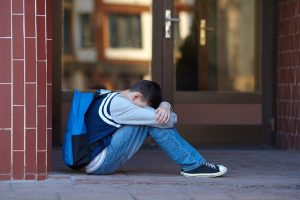 Mental health days can be very beneficial to kids for a much-needed break from the stress of school, particularly with kids who have ADHD, learning disabilities or high functioning ASD for whom school can be their hardest area of functioning.
Mental health days can be very beneficial to kids for a much-needed break from the stress of school, particularly with kids who have ADHD, learning disabilities or high functioning ASD for whom school can be their hardest area of functioning.
When kids are particularly overwhelmed, exhausted, anxious and fed up with school, a planned day off can be very helpful. These are days for rest, recovery and regrouping. Perhaps some time outside is in order: a walk, hike, or doing something athletic with you. Or maybe it’s a day with you a day in pajamas with limited screen time, playing board games, creating art projects, baking, reading or making music. I’ve worked with a number of kids with ADHD, LD or ASD who needed a break from the social and academic demands every 6-8 weeks. School was emotionally and physically draining for them. For adolescents who face increasing pressure to excel at everything, having a planned day off can be a lifesaver. Other kids benefit from a general agreement that they can have X number of days off per semester and you can choose these on an emergency basis (e.g. “I can’t take it anymore. I need a break”) or with certain dates set in mind. If a child doesn’t seem to rebound after this day and their symptoms of anxiety, sadness, depression or social difficulties persist, then I highly recommend finding a therapist to assist you in figuring out what is going on.
To be honest, I used mental health days with my daughter when she was a teenager. About twice a semester, she would hit a wall: she needed sleep and some down time to get her head back in the game. So, we periodically gave her a “Sick-and-Tired” day off from school. It wasn’t planned but we had agreed as a family in advance that she could have 2 such days per semester. It was a successful collaboration: she felt that she got the mental health day she needed and we saw a positive difference when she returned to school.

 Black Friday, Cyber Monday Alternatives
Black Friday, Cyber Monday Alternatives Panic attacks are best managed by having a concrete set of steps to follow that you’ve figured out beforehand. When you can identify the triggers and notice the warning signs, you can ground yourself more effectively and won’t be thrown off course as much. In a calm moment, think about what internal changes signal that you are feeling panicked and write these down. Increased heart-rate, shortness of breath, perspiration, knot in the stomach are common signs that anxiety is rising.
Panic attacks are best managed by having a concrete set of steps to follow that you’ve figured out beforehand. When you can identify the triggers and notice the warning signs, you can ground yourself more effectively and won’t be thrown off course as much. In a calm moment, think about what internal changes signal that you are feeling panicked and write these down. Increased heart-rate, shortness of breath, perspiration, knot in the stomach are common signs that anxiety is rising.  What people get wrong about depression:
What people get wrong about depression:
 Q: What foods might spike anxiety … and why?
Q: What foods might spike anxiety … and why? 